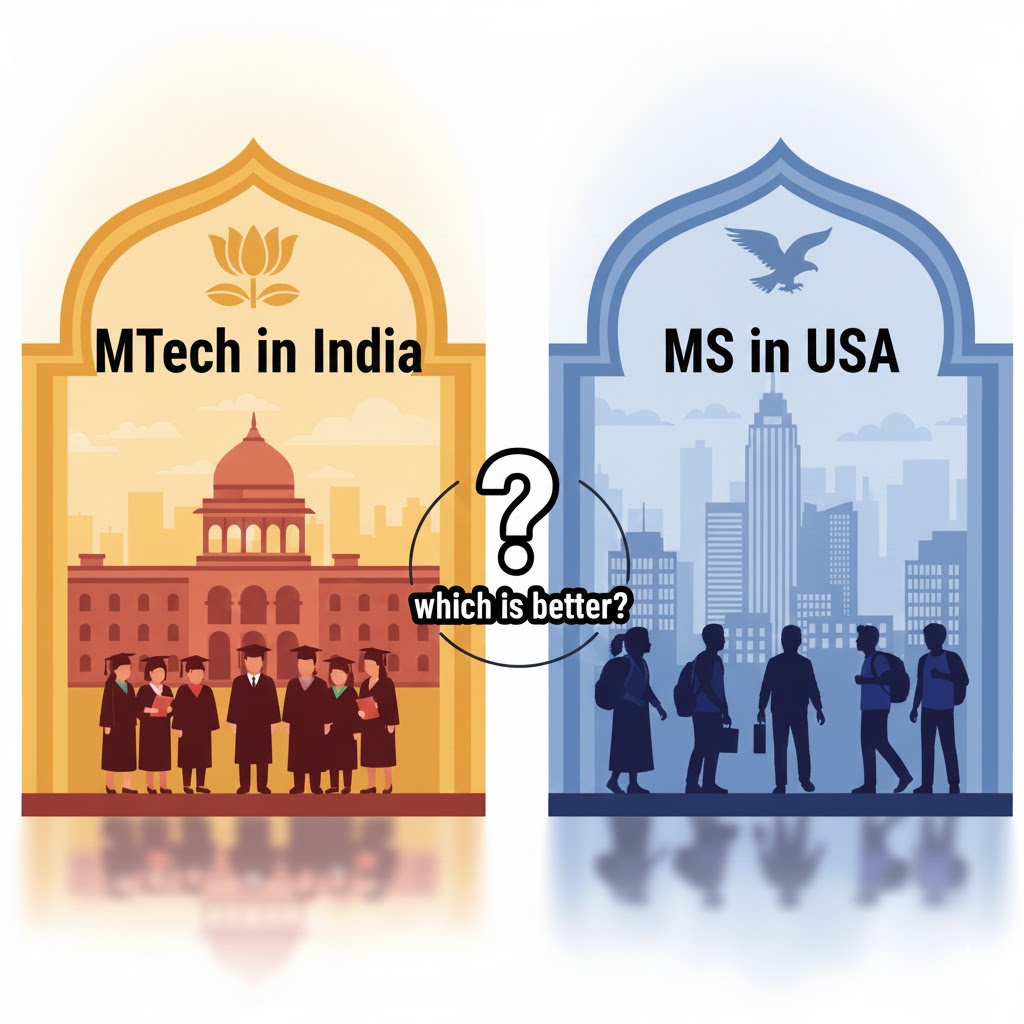
GATE Life Science Syllabus 2026: The Indian Institute of Technology, Guwahati is the conducting authority for GATE 2026 examination. Those who are going to appear for GATE 2026 for Life Science paper must begin their preparation journey by understanding the complete syllabus well.
The GATE Syllabus for Life Science includes General Aptitude (GA) and Chemistry (XL-P) as mandatory sections, while Biochemistry (XL-Q), Botany (XL-R), Microbiology (XL-S), Zoology (XL-T) and Food Technology (XL-U) are optional sections. Candidates can boost their preparation by analyzing the comprehensive syllabus provided in this article.
GATE Life Science Syllabus 2026 Overview
The entire GATE Life Science syllabus 2026 is divided into three sections: General Aptitude, Chemistry (XL-P), and Life Science subjects. However, General Aptitude and Chemistry sections are mandatory, while others are optional subjects which can be chosen by applicants as per their preference. From these, aspirants will have the choice to select any two:
| GATE Life Science Syllabus 2026 Overview | |
| Particular | Detail |
| Mandatory Sections | General Aptitude (GA) |
| Chemistry (XL-P) | |
| Optional Life Science Segments | Biochemistry (XL-Q) |
| Botany (XL-R) | |
| Microbiology (XL-S) | |
| Zoology (XL-T) | |
| Food Technology (XL-U) | |
GATE Life Science Syllabus 2026 for General Aptitude
The GATE Life Science Syllabus 2026 for General Aptitude is going to be common for all the sections. Moreover, around 10 questions worth 1 mark (5 questions) and 2 marks (5 questions) may arise in the GATE 2026 exam.
Aspirants should be prepared to answer questions based on the following topics:
- Verbal Ability: The rules of grammar in English, Completion of sentences, Analogies in words, Word groups, Critical Reasoning, and Verbal deduction, including instructions
- Numerical Ability: Topics in this section primarily include Numerical Computation, Numerical Reasoning, Numerical Estimation, and Data Interpretation.
GATE Life Science Syllabus 2026 for Chemistry (XL-P)
The Chemistry (XL-P) section of the GATE Life Syllabus 2026 is mandatory for aspirants from the relevant stream; therefore, it is essential to study it thoroughly. Find the important topics in Chemistry listed below.
| GATE Life Science Syllabus 2026 for Chemistry (XL-P) | |
| Topic | Subtopic |
| Atomic Structure and Periodicity | Planck’s quantum theory, wave particle duality, uncertainty principle, electronic configuration, Hund’s rule, periodic properties |
| Structure and Bonding | Ionic and covalent bonding, MO and VB approaches, VSEPR theory, hybridization, resonance, dipole moment, hydrogen bonding |
| s, p, and d Block Elements | Oxides, halides, hydrides, general characteristics of 3d elements, coordination complexes, color, geometry, magnetic properties |
| Chemical Equilibria | Osmotic pressure, boiling point, freezing point, ionic equilibria, solubility product, hydrolysis of salts, pH, buffer |
| Electrochemistry | Conductance, cell potentials, EMF, Nernst equation, thermodynamic aspects, applications |
| Reaction Kinetics | Rate constant, order of reaction, activation energy, zero, first, and second order kinetics, catalysis, enzyme reactions |
| Thermodynamics | First law, reversible and irreversible processes, internal energy, enthalpy, Kirchoff equation, second law, entropy, free energy |
| Structure-Reactivity Correlations | Acids and bases, stereochemistry, tautomerism, conformers, aromaticity, SN1, SN2, E1, E2 reactions, hydroboration reactions |
| Chemistry of Biomolecules | Amino acids, proteins, nucleic acids, nucleotides, carbohydrates, lipids, biomolecule purification, identification methods |
Let’s discuss the optional segments of the GATE Life Science Syllabus 2026 in-depth, along with important topics.
GATE Life Science Syllabus 2026 for Biochemistry (XL-Q)
The GATE Life Science Syllabus 2026 for Biochemistry (XL-Q) focuses on topics like the structure and function of biomolecules, cell structure, and organelles, among others, as given below. The syllabus provides a comprehensive outline of the topics that aspirants should be familiar with in order to perform well in the GATE 2026 exam.
| GATE Life Science Syllabus 2026 for Biochemistry (XL-Q) |
|
GATE Life Science Syllabus 2026 for Botany (XL-R)
Another optional segment of the GATE Life Science Syllabus 2026 is Botany (XL-R), which sheds light on topics like Plan bleeding, Genetic Modification, economics, and applied botany, among others. To read more about the important topics included in the Botany section of the GATE XL syllabus, refer to the table below.
| GATE Life Science Syllabus 2026 for Botany (XL-R) | |
| Topics | Subtopics |
| Plant Systematics | Botanical nomenclature, Plant classification, Molecular taxonomy, and Herbaria |
| Plant Anatomy | Root, stem, leaf anatomy, Floral organs, Embryo, Primary and secondary meristems |
| Plant Development and Morphogenesis | Angiosperm life cycle, Gametophyte development, Cell fate determination, Tissue patterning, Shoot and root apical meristems, Flowering transition |
| Plant Physiology and Biochemistry | Water relations, Nutrient uptake, Stomatal movements, Nitrogen metabolism, Photosynthesis, and Respiration |
| Abiotic stresses, Biomolecules, and Secondary metabolites | |
| Genetics and Genomics | Cell cycle, Mendelian inheritance, Genetic mapping, Epigenetics, Gene silencing, and Genome structure |
| Gene expression, Mutation, Chromosomal aberrations, Transposons, and Functional genomics | |
| Plant Breeding and Genetic Modification | Selection, Hybridization, Molecular markers, Tissue culture, Gene transfer methods, and Genome editing |
| Economic and Applied Botany | Economically important plants, Cash crops, Industrial impact, Genetically modified crops |
| Plant Pathology | Plant diseases, Pathogen control, Pathogenesis, Resistance, and Plant-microbe interactions |
| Signaling pathways, Host-parasitic plant interaction | |
| Ecology and Environment | Ecosystems, Biogeochemical cycles, Succession, Food webs, Vegetation types, and Climate |
| Pollution, Biodiversity, Conservation, and Plant interactions with other organisms | |
GATE Life Science Syllabus 2026 for Microbiology (XL-S)
The Microbiology (XL-S) section of the GATE 2026 Life Science Syllabus includes topics like Control of Microorganisms, Microbial Metabolism, Microbial Diseases, Host-Pathogen Interaction, and so on. Check out the list of essential topics picked from the Microbiology (XL-S) syllabus.
| Microbiology (XL-S) GATE 2026 Life Science Syllabus | |
| Topics | Subtopics |
| Historical Perspective | Discovery of microbial world, Landmark discoveries in microbiology, Controversy over spontaneous generation, Role of microorganisms in organic matter transformation and disease causation |
| Methods in Microbiology | Pure culture techniques, Microbial nutrition principles, Enrichment culture techniques, Antigen and antibody detection methods, Microscopy techniques, PCR and real-time PCR, and Next-generation sequencing technologies |
| Microbial Taxonomy and Diversity | Bacteria and Archaea classification, Eukaryotic microbes: Yeasts, molds, and protozoa, Virus classification, Molecular approaches to microbial taxonomy and phylogeny |
| Prokaryotic Cells: Structure and Function | Cell walls and membranes, Solute transport mechanisms, Flagella and Pili, Capsules, Cell inclusions like endospores and gas vesicles, Bacterial locomotion, and chemotaxis |
| Microbial Growth | Definition of growth, Growth curve, Measurement of growth, Synchronous growth, Continuous culture, Environmental factors affecting growth, Bacterial biofilm and biofouling |
| Control of Microorganisms | Disinfection and sterilization principles, Methods, and assessment of efficacy |
| Microbial Metabolism | Energetics, Electron transport and oxidative phosphorylation, Overview of metabolism, Glycolysis, Pentose-phosphate pathway, Entner-Doudoroff pathway, Glyoxylate pathway, Citric acid cycle, Fermentation, Respiration, Chemolithotrophy, Photosynthesis, Biosynthetic pathways, and Regulatory mechanisms |
| Microbial Diseases and Host-Pathogen Interaction | Microbiota, Classification of infectious diseases, Reservoirs of infection, Nosocomial infections, Opportunistic infections, Emerging infectious diseases, Pathogenicity mechanisms, Host defense mechanisms, Antigens and antibodies, Immune responses, Vaccines, Human diseases caused by microorganisms |
| Chemotherapy/Antibiotics | Antimicrobial drug characteristics, Antibiotics classification, Mechanisms of action and resistance, Antifungal and antiviral drugs |
| Microbial Genetics | Types of mutation, Mutagens, Selection of mutants, Bacterial genetic systems, DNA repair, Gene expression regulation, Operon model, Bacterial genome, Phage λ life cycle, RNA, Virus genomes, Microbial genomics concepts |
| Microbial Ecology | Microbial interactions, Carbon, sulfur, and nitrogen cycles, Soil microorganisms, Bioremediation, Uncultivable microorganisms, Metagenomics, and metatranscriptomics |
GATE Life Science Syllabus 2026 for Zoology (XL-T)
Important topics like animal diversity, evolution, and genetics, in addition to the following topics, are included in the Zoology section of the GATE Life Science Syllabus 2026.
| GATE Life Science Syllabus 2026 for Zoology (XL-T) | |
| Topics | Subtopics |
| Animal Diversity | Distribution, systematics, and classification of animals; Phylogenetic relationships using classical and molecular phylogenetic tools |
| Evolution | Origin and history of life on earth, theories of evolution, natural selection, adaptation, and speciation |
| Genetics | Molecular basis of heredity, Basic Principles of inheritance, sex determination and sex-linked characteristics, cytoplasmic inheritance, linkage, genetic disorders, recombination, and mapping of genes in eukaryotes, population genetics, and roles of model organisms in understanding genetic principles |
| Biochemistry and Molecular Biology | Nucleic acids, proteins, lipids, and carbohydrates; roles of vitamins and minerals; replication, transcription, and translation; Krebs cycle; glycolysis; enzyme catalysis; hormones and their actions |
| Cell Biology | Basic principles of cellular microscopy: structure of cells, chromosomes, cytoskeletal organization, cellular organelles and their structure and function, cell cycle, cell division, and chromatin structure |
| Gene expression in Eukaryotes | Transposable elements, Eukaryotic genome organization and regulation of gene expression |
| Animal Anatomy and Physiology | Comparative physiology: the respiratory system, the muscular system, the circulatory system, the digestive system, the nervous system, the excretory system, the endocrine system, and the skeletal system |
| Parasitology and Immunology | The nature of parasites, host-parasite relations, protozoan and helminthic parasites, the immune response, and the cellular and humoral immune response |
| Development Biology | Gametogenesis, organogenesis, Embryonic development, cellular differentiation, Model organisms used in developmental biology, metamorphosis, the genetic and molecular basis of development, and stem cells |
| Ecology | Food chain, population dynamics, species diversity, zoogeography, biogeochemical cycles, conservation biology, and ecotoxicology |
| Animal Behaviour | Animal behavior types, courtship, mating, and territoriality, instinct, learning, and memory, social behavior among animal species, communication, pheromones, and animal behavior evolution |
GATE Life Science Syllabus 2026 for Food Technology (XL-U)
The GATE Life Science Syllabus 2026 for Food Technology (XL-U) is the fourth and last optional segment of Life Science. This is considered to be one of the highest-scoring sections, and it includes topics like:
| GATE Life Science Syllabus 2026 for Food Technology (XL-U) | |
| Topics | Sub-topics |
| Food Chemistry and Nutrition | Carbohydrates, Proteins, Lipids, Pigments, Food flavors, Enzymes, Nutrition and Chemical and biochemical changes |
| Food Microbiology | Characteristics of Microorganisms, Microbial Growth, Food Spoilage, Toxins from Microbes, and Fermented Foods and Beverages |
| Food Products Technology | Processing Principles, Food Packaging and Storage, Cereal Processing and Products, Oil Processing, Fruits and Vegetables Processing, Plantation Crops Processing and Products, Milk and Milk Products Processing, Processing of Animal Products, Waste Utilization, Food Standards, and Quality Maintenance |
| Food Engineering | Mass and energy balance, Momentum transfer, Heat transfer, Mass transfer, Mechanical operations, Thermal operations, and Mass transfer operations |
GATE Life Science Syllabus 2026 PDF
Downloading the GATE Life Science Syllabus 2026 PDF is essential for aspirants, as it provides a comprehensive outline of the topics to be covered in the GATE 2026 exam. Having access to the syllabus enables aspirants to plan their study effectively and ensure they focus on the relevant subjects for exam preparation.
GATE Life Science Syllabus PDF
GATE Life Science Exam Pattern 2026
While the GATE Life Science syllabus 2026 sheds light on important topics, understanding the GATE Life Science exam pattern is equally essential for aspirants since it provides insights into the structure, marking scheme, and question types, allowing them to effectively plan their preparation and improve their marks.
Moreover, the GATE Life Science exam pattern helps aspirants get familiar with the format of the exam, allocate time wisely, and strategize their approach to different question types.
| GATE Life Science Exam Pattern 2026 | ||||||
| Section | Total Number of Questions | Total Marks | ||||
| 1 Mark | 2 Marks | Total | ||||
| General Aptitude | 5 | 5 | 10 | 15 | ||
| Chemistry (XL-P) | 5 | 10 | 15 | 25 | ||
| Life Science Section (Any two from Q-U) | 10 | 10 | 20 | 40 | 30 | 60 |
| 10 | 10 | 20 | 30 | |||
| Total | 30 | 70 | 65 | 100 | ||
Elevate your GATE readiness with Physics Wallah’s GATE Online Courses. PW GATE Online Coaching offers comprehensive live sessions tailored to the syllabus, invaluable study materials, practice tests, and much more.
GATE Life Science Syllabus 2026 FAQs
Q. Is the GATE Life Science Syllabus 2026 lengthy?
Q. Are there any optional papers in the GATE Life Science exam?
Q. Who will release the GATE Life Science Syllabus 2026?
Q. What are the main topics in the GATE Life Science Syllabus for Food Technology?









